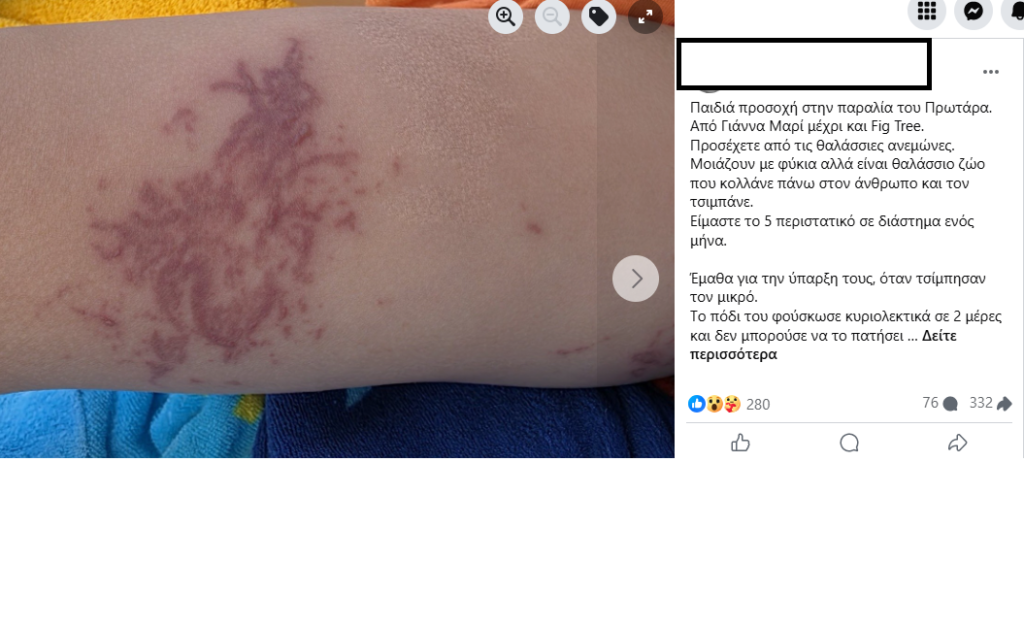Reports of jellyfish and sea anemones in Cyprus waters have been circulating across social media in recent weeks, raising public concern during the summer holiday season.
In response, the Department of Fisheries and Marine Research (DFMR) issued a statement addressing the matter. According to the department, there have been a few isolated reports from members of the public regarding stings caused by sea anemones.
The DFMR reminds the public that various marine species present in Cypriot waters may pose risks due to toxins contained in their tissues or organs. These include marine invertebrates such as jellyfish, sea anemones, polychaetes, sea urchins, as well as certain fish species.

Detailed information on identifying these species, as well as guidance on prevention and treatment of injuries or poisoning, can be found in the department’s leaflet titled “Venomous marine organisms in Cyprus waters.”
The department urges the public to exercise caution and avoid direct contact with such marine organisms when encountered in their natural habitats.
Sea anemones: Where they are found
Sea anemones typically inhabit coastal areas. While most species dwell near the shore, a few can be found in deeper waters, and even fewer in the open sea. The majority of anemones live attached to rocks, although some species reside in sand or mud, cling to shells, or live parasitically on jellyfish.
Featured photo source: Scientific American
Also read: Dr Nadia Stylianou honored for her poetic work
For more videos and updates, check out our YouTube channel.


